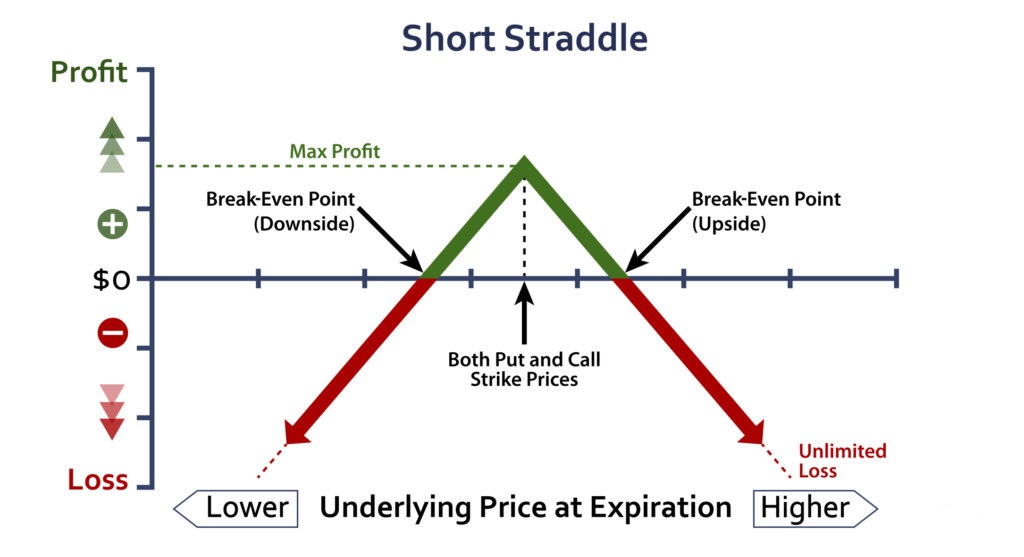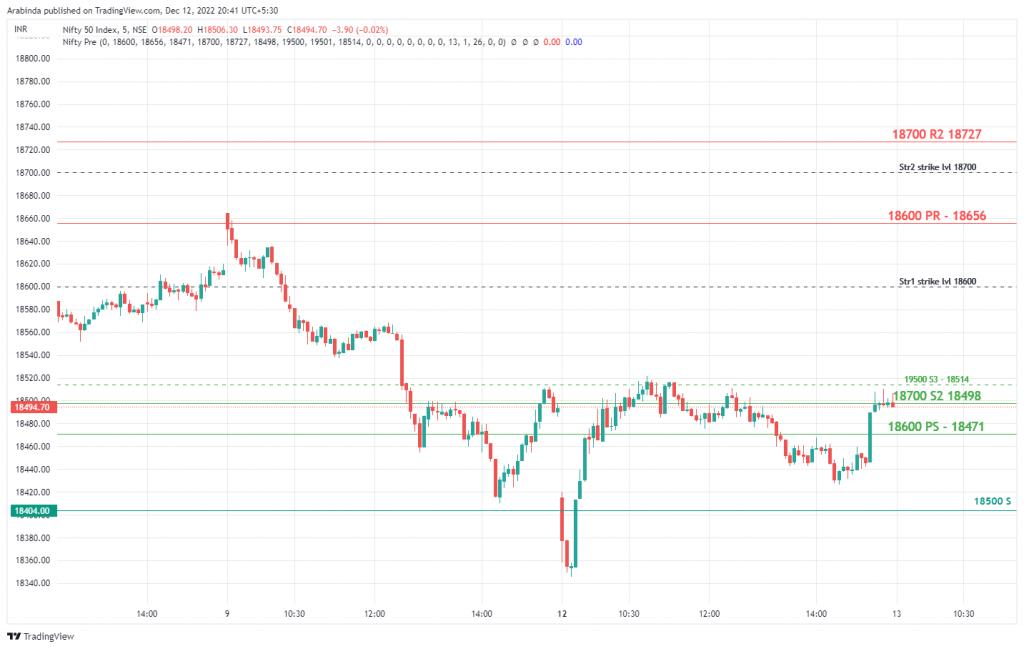Learn yourself ; Observing the day live charts in your platform with option strike (straddle) resistance and support lines. Straddle RS lines play lead role in intraday trading session causing the price action. The range between the resistance and support is operating zone corresponding to the strike. So like wise top three straddle RS lines need to be drawn in the price charts. Fundamentally 1st/2nd straddle resistance/support play the role on most of days .Sometimes exceptions happen in major gap up /down with huge short covering and put unwinding, so on those days the RS lines need to be chosen as per opening strike and nearby strikes; then trading decision needs to be taken as per new set of lines.
One important characteristics of theses straddle lines is that if price is getting support at any support line corresponding to any particular strike then it tries to cover the zone means finally it achieves its resistance line and vice-verse if other strike in between lines are broken as per their strength priority (Total Open Interest) or strength built up (OI built up as day progresses) during the day trading process.
At least you have to observe in this trading set up for 3-6 ( 2 Quarters) months to understand the price action and how it is improving your decision making for a good trading acumen. Which will help making a good profit factor minimizing losses and traps.
What is short straddle ?;A short straddle is an options strategy comprised of selling both a call option and a put option with the same strike price and expiration date. It is used when the trader believes the underlying asset will not move significantly higher or lower over the lives of the options contracts. But pure straddle formation is not possible as naked writers and buyers exist in the system. Influence of straddle formation remains through out the weekly and monthly series unless any huge gap up/down occurs where major short covering / put writing and put unwinding /call writing happens. The straddle formation shifts to new strike after this major change.
There is a myth that writers/sellers win 70 % and buyers win 30 % times but in reality if proper risk management and market dynamics study is carried out then buyers can also achieve 80 % provided the entry/exit is executed with proper time management. If put writing is dominant in the market at any level then retailers should go for call buying and if call writing is dominant at any price level then you should go for put buying. So in this way the buyers can achieve if right entry and exit is maintained with disciplines like trade confirmation and no over trading. In option instrument trading, always ‘writer’ word is referred as writers have to pay higher margin for the same strike as compared to buyer premium here it means monetarily writer is powerful than option buyer. We have designed and calculated strike RS lines by our QC modelling to help people for confirmation of price action with a solid reason of fundamentals in due course by practice.

Why believe this system?; Because it is pure technical based on options data and statistical calculations. Option data means it is the reality of market how put and call writers positions give the directions to market on daily basis. It is not based on any lagging indicator rather the trading set up is a leading indicator itself based on pure deep technical studies. It is the principle which forms the pattern in the market. It will add value to your trading process rather than making it a gamble ; means it will help you to remove your gambling instinct in due course. It will improve your patience and decision making towards right entry and exit which is the only key for intraday performance.
How to day trade?
1. Get well informed about next day dynamics e.g. events/results/RBI-Macro-policy announcement etc.
2. Do your homework and set the strike RS lines for 1st/2nd/3rd straddle in your trading platform as shown below.
3. Never jump to trades in 1st 30 minutes . Better to avoid if you are not fully confirmed.
4. Do not over trade, only take trades with confirmation which means you have to take trade entries only at perfect resistance and support lines with a curvature formation. Sometimes the resistance line can play support role and support lines can play resistance role that needs to be also considered.
5. Also the 1st hour peaks and bottoms are very important as these lines along with yesterday high low close signify the day dynamics , price action and psychology of the market.
6. Also regarding straddle RS lines concept e.g. if price is taking a support near by PS then it is a definite buy as the 1st straddle is active to achieve its target of strike price and if momentum continues then it may lead price to PR levels that is the 1st strike resistance. So like wise a lot of different combinations in PR/R2/R3 and PS/S2/S3 comes into play in intraday which need to be analyzed as written above for PR and PS combination. The resistance and support are considered as the maximum limit corresponding to any strike but sometimes these are broken which signifies that the other strike above or below are active and came into picture ;so like wise focus should shift to other strikes for decision making along with their limits.
Some bad habits in day trading which needs to controlled are over trading, revenge trading, not cutting positions in hope of more profit when already in good profit (greed), cutting positions early(fear),thinking more about profit and losses.
Nomenclature
PR/PS- Power Resistance or Support / 1st Straddle strike Resistance or Support
R2/S2- 2nd straddle strike Resistance or Support
R3/S3- 3rd straddle strike Resistance or Support
NB:: 1st/2nd /Opening strike( For Huge Gap up/down opening) resistance and support price levels take lead role in intraday session on most of the days.
Charting Platform Set up Example ( Banknifty-5 minute chart)

BANKNIFTY OPTION CHAIN ANALYSIS Example
Charting Platform Set up Example ( Nifty50- 5 minute chart)

NIFTY 50 OPTION CHAIN ANALYSIS Example
Trading Psychology
Many skills are required for trading successfully in the financial markets. They include the abilities to evaluate a company’s fundamentals and to determine the direction of a stock or index ‘s trend. But neither of these technical skills is as important as the trader’s mindset and psychology.
Containing emotion, thinking quickly, and exercising discipline are components of what we might call trading psychology.
There are two main emotions to understand and keep under control: fear and greed apart from hope, regret, fear of missing out.
Trading Acumen
Traders must often think fast and make quick decisions (trading acumen), darting in and out of positions on short notice. To accomplish this, they need a certain presence of mind and FOCUS. They also need the discipline to stick with their own trading plans and know when to book profits and losses. Emotions simply can’t get in the way.
How to Control Emotion Driven Trading Decisions?
It is about identifying your emotional triggers and realizing how you react to these emotions. Suppose your positions getting into huge loss then what is your feelings at that time? Whether you will cut positions or hold on or go for averaging. All that depend upon your skills of fact analysis and decision making with proper plan. Creating a risk management plan is essential to ensure that you book profits or losses. Always keep in mind of trade exit first before your trade entry. Learn where to sell and where to buy. Where to sell is much more important than where to buy. Because it is a game of buying and selling, but most traders stuck up with buying only and they delay in selling or cutting positions and get trapped in losses.
Also, people trading in options should learn about the “Black and Scholes pricing model” (Nobel Prize in 1997) to know the theory behind depreciating nature of option price.
An award-winning book “Thinking, Fast and Slow ” by Daniel Kehneman (Winner of Novel Prize-2002) must be read to learn how our own psychology affects in day-to-day decision making and judgement for various processes. He has also explained regarding traders and stock market psychology in his book.
Stay Flexible and Self-assessment
It’s important for traders to remain flexible and consider experimenting from time to time. For example, you might consider using methods to mitigate risk. One of the best ways a trader can learn is by experimenting (within reason and within calculated risk). The experience may also help reduce emotional influences. But sometime down the line one should make a concrete plan to follow in day trading process.
Finally, traders should periodically assess their own performances. In addition to reviewing their returns and individual positions, traders should reflect on how they prepared for a trading session, how up to date they are on the markets, and how they’re progressing in terms of ongoing education. This periodic assessment can help a trader correct mistakes, change bad habits, and enhance overall returns.
Thank you for your support for market research!
